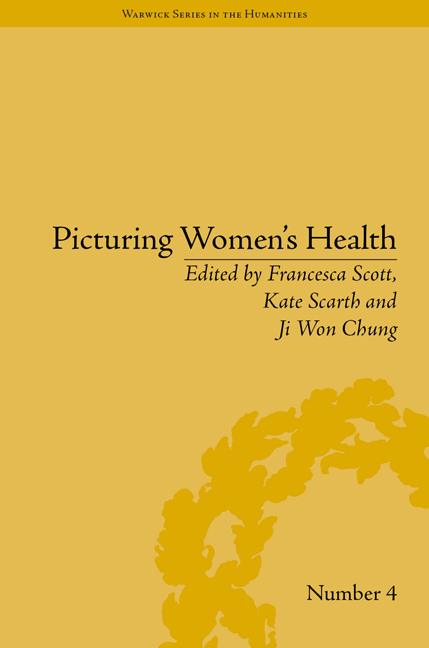Book contents
- Frontmatter
- CONTENTS
- Acknowledgements
- List of Contributors
- List of Figures
- Introduction: Picturing Women's Health
- 1 Sensibility and Good Health in Charlotte Smith's Ethelinde
- 2 Amazonian Fashions: Lady Delacour's (Re)Dress in Maria Edgeworth's Belinda
- 3 Transforming the Body Politic: Food Reform and Feminism in Nineteenth-Century Britain
- 4 Stagnation of Air and Mind: Picturing Trauma and Miasma in Charlotte Brontë's Villette
- 5 The Iconography of Anorexia Nervosa in the Long Nineteenth Century
- 6 Kate Marsden's Leper Project: On Sledge and Horseback with an Outcast Missionary Nurse
- 7 Constructs of Female Insanity at the Fin de Siècle: The Lawn Hospital, Lincoln, 1882–1902
- 8 The Fitness of the Female Medical Student, 1895–1910
- 9 Unstable Adolescence/Unstable Literature? Managing British Girls' Health around 1900
- NOTES
- Index
1 - Sensibility and Good Health in Charlotte Smith's Ethelinde
- Frontmatter
- CONTENTS
- Acknowledgements
- List of Contributors
- List of Figures
- Introduction: Picturing Women's Health
- 1 Sensibility and Good Health in Charlotte Smith's Ethelinde
- 2 Amazonian Fashions: Lady Delacour's (Re)Dress in Maria Edgeworth's Belinda
- 3 Transforming the Body Politic: Food Reform and Feminism in Nineteenth-Century Britain
- 4 Stagnation of Air and Mind: Picturing Trauma and Miasma in Charlotte Brontë's Villette
- 5 The Iconography of Anorexia Nervosa in the Long Nineteenth Century
- 6 Kate Marsden's Leper Project: On Sledge and Horseback with an Outcast Missionary Nurse
- 7 Constructs of Female Insanity at the Fin de Siècle: The Lawn Hospital, Lincoln, 1882–1902
- 8 The Fitness of the Female Medical Student, 1895–1910
- 9 Unstable Adolescence/Unstable Literature? Managing British Girls' Health around 1900
- NOTES
- Index
Summary
There are as many and as different Degrees of Sensibility or Feeling as there are Degrees of Intelligence and Perception in human Creatures; and the Principle of both may be perhaps one and the same. One shall suffer more from the Prick of a Pin, or Needle, from their extreme Sensibility, than others from being run thro' the Body; and the first sort, seem to be of the Class of these Quick-Thinkers I have formerly mentioned; and as none have it in their Option to choose for themselves their own particular Frame of Mind nor Constitution of Body; so none can choose his own Degree of Sensibility.
This is one definition of the popular theory of ‘sensibility’ as offered by Dr George Cheyne, doctor to Samuel Richardson. Eighteenth-century understandings of health were heavily influenced by sensibility. Grounded in influential works by John Locke, Isaac Newton, David Hume and Adam Smith among others, the idea of sensibility was based upon a conception of the elasticity of the nervous system. The link between ‘quick-thinkers’ and those susceptible to physical pain posits a link between sensitivity of mind and sensitivity of body, a current of thought common to much writing on sensibility in the period. In the privileged classes with access to luxury goods, the excessive consumption of fine food and drink was considered a threat to the constitution, and particularly to the constitution of those with great sensibility. Equally, the sensitive feeling of mind associated with those of sensibility was thought to render them vulnerable to nervous disorders caused by acute emotional distress. Unsurprisingly, perhaps, as the eighteenth century progressed the concept of sensibility was used to delineate gender difference.
- Type
- Chapter
- Information
- Picturing Women's Health , pp. 11 - 28Publisher: Pickering & ChattoFirst published in: 2014

